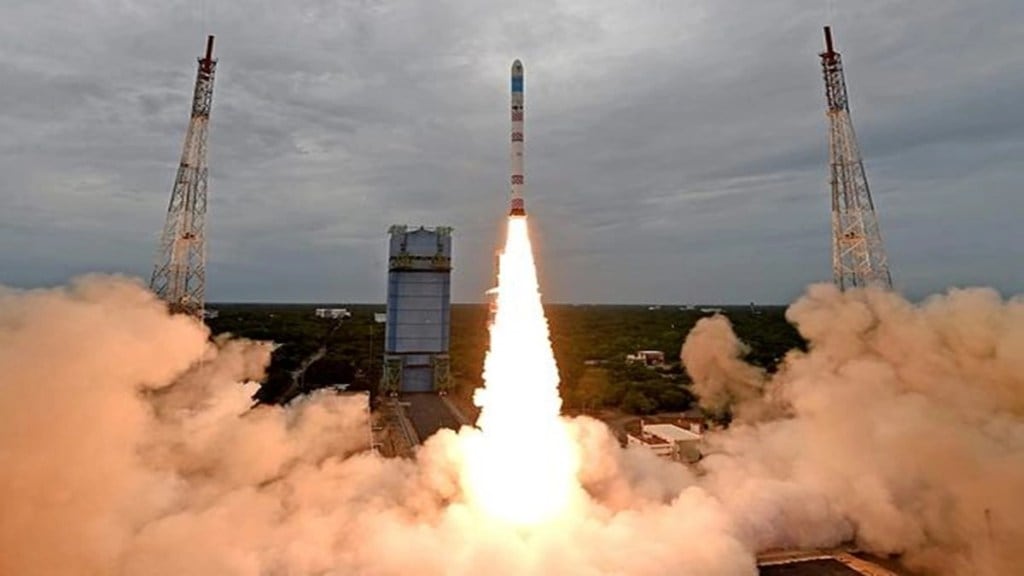Ahead of the expected Chandrayaan-3 mission later this year, the hot test of the CE-20 cryogenic engine was conducted successfully recently at the Indian Space Research Organisation (ISRO) Propulsion Complex in Mahendragiri, Tamil Nadu.
The CE-20 cryogenic engine will provide thrust to the Cryogenic Upper Stage of the LVM3 launch vehicle used in the Chandrayaan-3 Mission. The test was done for a duration of 25 seconds in the High Altitude Test Facility, and the propulsion parameters were seen to be satisfactory and in line with expectations. The cryogenic engine will now be combined with propellant tanks, stage structures and related fluid lines so as to produce the integrated flight cryogenic stage.
What is a hot test?
A hot test is an assessment of an engine’s performance which replicates conditions that occur when it is running in a real vehicle. It evaluates all the parameters which are necessary to make sure the engine is running properly.
ISRO is in the process of planning a third lunar expedition, Chandrayaan-3, which will be similar to Chandrayaan-2. However, Chandrayaan-3 will not include an orbiter in its mission. Chandrayaan-3 is expected to be launched between June and July 2023 and will be launched from the Satish Dhawan Space Centre in Sriharikota using an LVM3 rocket. The lunar rover, lander, and propulsion module which will be part of the mission will be aiming for the same landing site on the Moon’s South Polar Region which was attempted by the Vikram lander in Chandrayaan-2’s mission in 2019.
The space agency has plans to study the mysterious far side of the Moon in conjunction with the Japanese Aerospace Exploration Agency (JAXA). ISRO and JAXA will launch a lunar rover and lander to probe the uncharted shadows of the Moon. ISRO will construct the rover and lander, and a Japanese rocket will be employed to place it in orbit.
Chandrayaan-3 will not include an orbiter in its mission. What does it mean?
This means that the spacecraft will not remain in lunar orbit to study the Moon from above, as the Chandrayaan-2 orbiter continues to do. Instead, the spacecraft will be designed to land directly on the Moon’s surface, carrying a rover that will explore and collect data from the lunar surface.
Not having an orbiter component allows ISRO to focus more on the mission’s landing and surface operations.
Know more about the three modules
Chandrayaan-3 is an upcoming interplanetary mission by the Indian Space Research Organisation (ISRO) to the Moon. The mission comprises three major modules: the Propulsion module, Lander module, and Rover. Here’s what each of these modules means:
Propulsion Module: This module is responsible for providing the propulsion needed to transport the Lander and Rover from Earth to the Moon. It includes the engines, fuel tanks, and other necessary components for the journey.
Lander Module: This module is designed to land on the Moon’s surface and deliver the Rover to the lunar surface. It will include a descent engine, landing gear, and scientific instruments to study the lunar environment.
Rover: The Rover is a robotic vehicle that will be deployed on the Moon’s surface to conduct scientific experiments and collect data. It is equipped with scientific instruments, including cameras, spectrometers, and other sensors, to study the lunar surface and environment.
Together, these modules will work in tandem to explore the Moon and gather scientific data about its surface and environment. The Chandrayaan-3 mission is expected to build upon the success of the previous Chandrayaan missions, which have contributed significantly to India’s understanding of the Moon.
